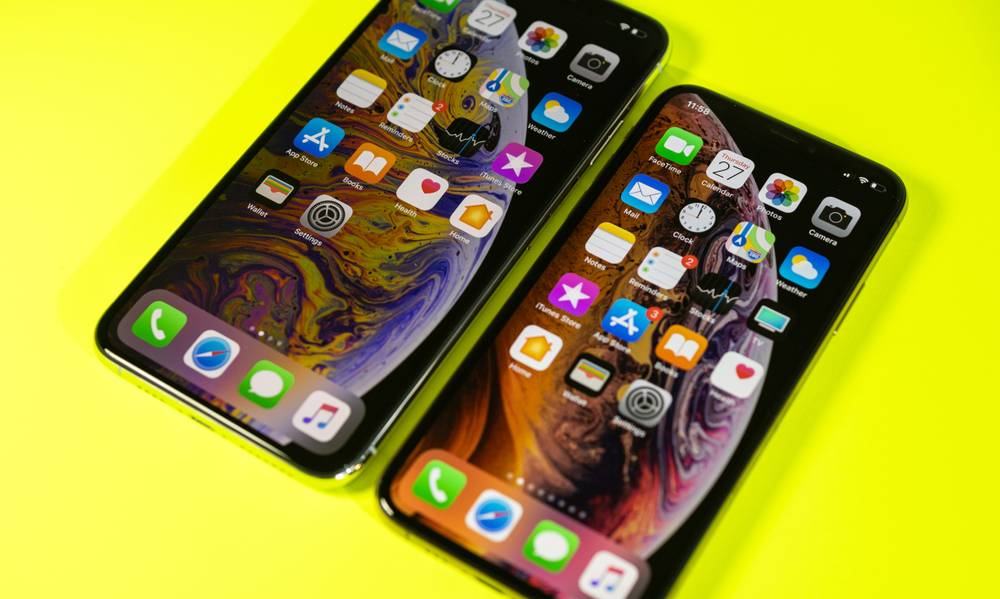Can Qualcomm’s New Snapdragon 855 Actually Beat Apple’s Beastly A12?
 Credit: Hadrian / Shutterstock
Credit: Hadrian / Shutterstock
Toggle Dark Mode
Back in November at its annual Snapdragon Tech Summit (2018), Qualcomm showcased the upcoming Snapdragon 855 SoC, embodying the chip maker’s next-generation of mobile CPUs for high-end smartphones and tablets. Set to officially debut in early-2019, the still-in-development SnapDragon 855 boldly promises performance topping Apple’s latest A12 Bionic — but will it really?
Inviting investors and potential customers in attendance to “see the most extreme Snapdragon ever created,” Qualcomm executives took turns outlining the Snapdragon 855’s most noteworthy new features and advancements, including its fabrication on the latest 7-nanometer FiNFET process (a la Apple’s A12 and A12X Bionic), as well as its “industry-leading connectivity” made possible via the chip-maker’s upgraded, integrated X24 modem.
The X24 — vis á vis Qualcomm’s X20 modem currently in high-end devices like Samsung’s Galaxy Note 9 — promises support for both 5G, and LTE Cat. 20 speeds of “up-to 2Gbps” — or about “twice as fast as Apple’s latest iPhone models.”
Qualcomm also flaunted the Snapdragon 855’s next-generation Adreno 640 GPU, which executives noted as being able to produce up to 20 percent better graphics performance with relation to Apple’s A12 and the Snapdragon 845.
Those in attendance at the chip maker’s November 28 keynote have offered-up mostly positive points about the 855 so far, with Creative Strategies analyst and Techpinions founder Ben Bajarin noting in a Tweet that “the 855 looks to be such a significant jump that I think they can maintain, and even gain share back in the premium segment.”
But Is It Really?
Sadly, as Qualcomm may (or may not) be aware, not only is the “premium segment” they’re aiming to target with the 855 almost entirely dominated by companies like Apple, Samsung and Huawei — the “big-three” phone makers, who mostly or entirely build and rely on their own custom mobile silicon — but the Snapdragon 855’s supposed “next-generation performance” might be way overblown.
Problems with the Snapdragon 855
As our good friends over at Apple Insider note in their thorough coverage and analysis of the 855 SoC, and examining specifically how it matches-up against Apple’s A12 Bionic, there are a number of factual and theoretical issues that may end up spelling gloom for Qualcomm.
For starters, while Qualcomm is already marketing the hell out of the 855’s speed and connectivity improvements, including its X24 modem capable of 5G and LTE Cat.20 speeds — it’s worth noting most of all that our current mobile network infrastructure isn’t even strong or built-out enough to take advantage of the theoretical speeds Qualcomm is touting yet.
And it won’t be, for at least another eight-to-nine months (or longer).
Apple Insider went on to cite a number of real-world speed tests between recent devices like the iPhone 8, X and Galaxy S9 in its conclusion that, in terms of mathematical, download/upload performance, Qualcomm’s vigorous promotion of these faster theoretical speeds of “up-to 2Gbps” (while impressive) is largely irrelevant.
“Beyond speed, there are other advantages to improved modem technology, but Qualcomm isn’t really articulating any strong selling points,” Apple Insider notes. “Instead, it feeds nonsense marketing fluff to members of the media who are delighted to carry water for it.”
Moreover, there are big transitions currently taking place in this “premium Android segment,” with global firms like Samsung recently announcing it would focus more on selling mid-range devices boasting older, less-powerful Qualcomm chips — or even its own in-house Exynos CPUs — in lieu of ‘newer technologies’, amid slower-than-expected Galaxy S9 and Note 9 sales.
Other high-end and high-volume Android OEMs, too — like Huawei with its in-house HiSilicon Kirin chips — pose a similar conundrum for the fate of Qualcomm’s upcoming Snapdragon 855.
Now the question, as Apple Insider quipped, is who (among the small field of high-end Android-makers) will ultimately step-up to purchase [very, very large quantities] of Qualcomm’s 855 chip? Especially “In a plateauing smartphone market where Apple increasingly attracts the vast majority of the world’s premium buyers.”
With a winnowing field of would-be customers increasingly relying on their own in-house CPUs — and more Android buyers now than ever before indicating their preference for lower-priced devices rather than pricey, high-end performance and new features — Qualcomm may end up struggling in its bid to swoon premium phone makers into paying for its ‘latest and greatest’ technology.






